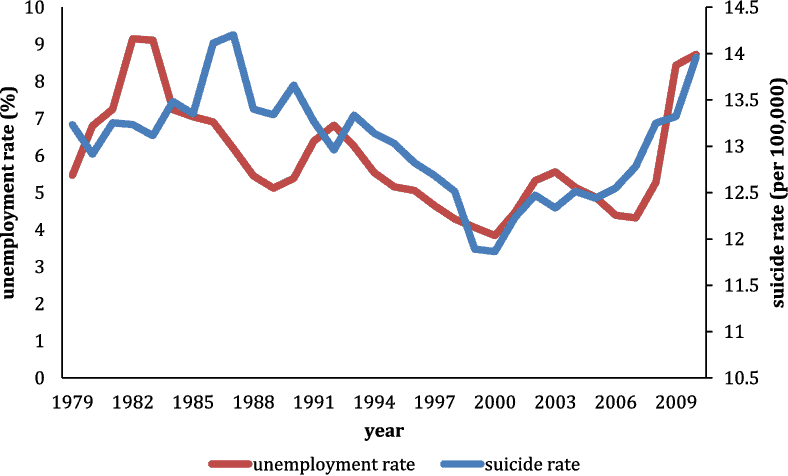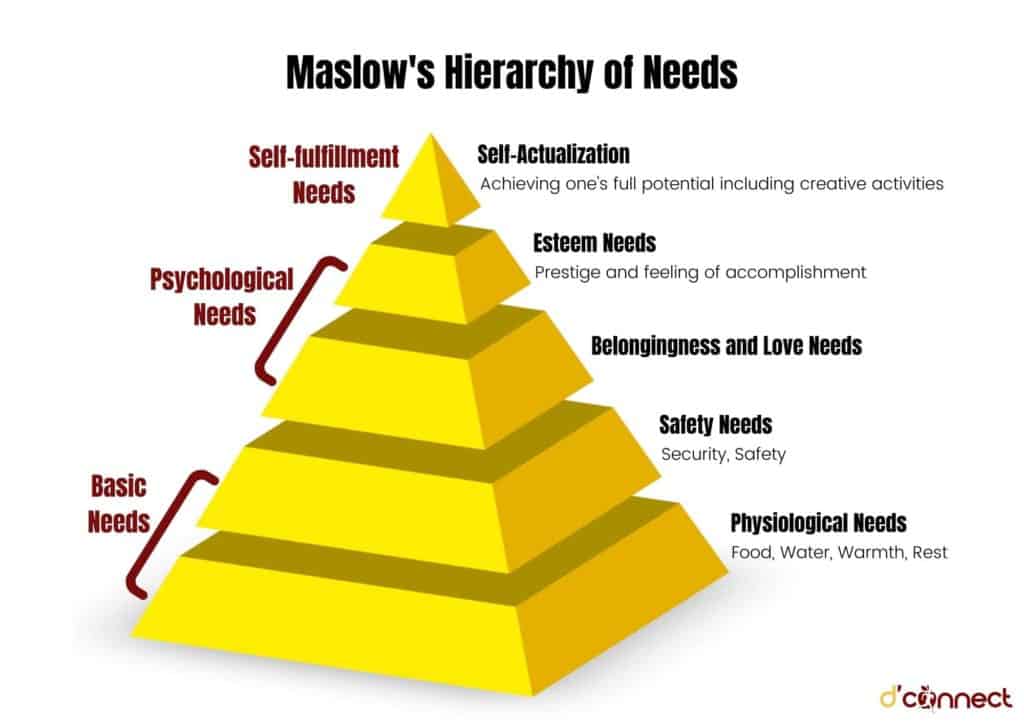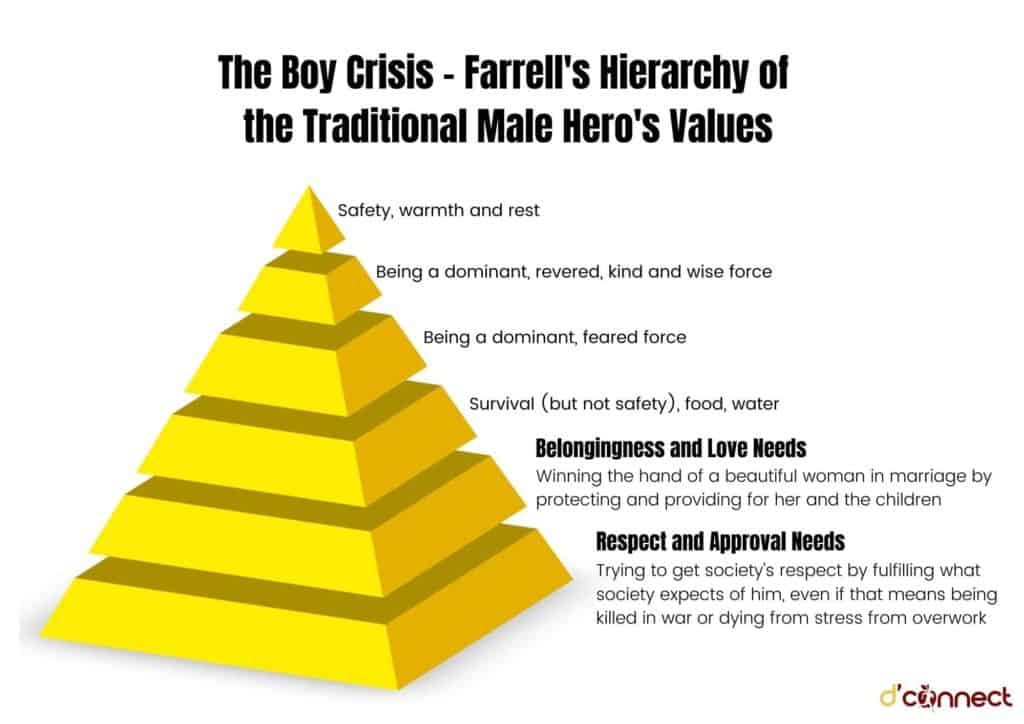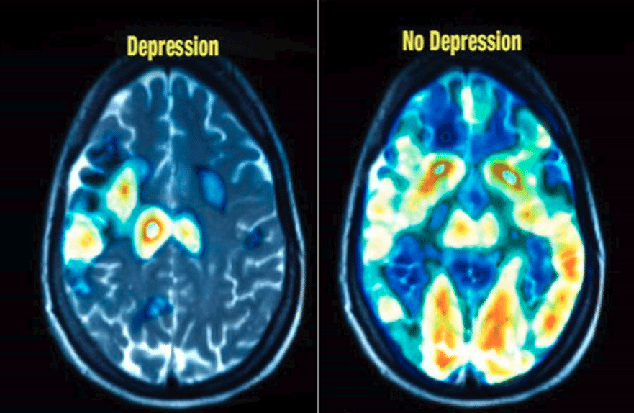
Molly Farrell
BSci majoring in Psychology, PGDp in Health Science
Note — The article was checked and updated May 2023.
Close to 1 million people lose their lives due to suicide every single year and this number is continuing to rise.
By taking a look at who are our most vulnerable, we can make sense of what factors may be coming into play contributing to the risk of this tragedy.
What makes a man more vulnerable than a woman? Why are countries with a lower socio-economic status the nations with the lowest rates of suicide in the world?
Today, we will answer some of these questions.
Suicide - Growing concern of today's modern world
Suicide rates are exponentially on the rise and in human history, we as a species, have never experienced such high rates of these tragedies. From a global scale, we have a devastating average of 800,000 lives lost every year to suicide.
| Countries with the highest rate of suicide in the world | Number of suicides per 100k people |
| 1. Lesotho | 72.4 |
| 2. Guyana | 40.3 |
| 3. Eswatini | 29.4 |
| 4. South Korea | 28.6 |
| 5. Kiribati | 28.3 |
| 6. Federated States of Micronesia | 28.2 |
| 7. Lithuania | 26.5 |
| 8. Suriname | 25.4 |
| 9. Russia | 25.1 |
| 10. South Africa | 23.5 |
For added perspective, an average 1.4% of global deaths are attributed to suicide. For countries with some of the highest rates, this number can be as high as 5%.[1]
The largest risk factor of suicide is having a pre-existing mood disorder, the most prominent being depression. One study investigating this link between mood disorders and suicide, came to the result that 98% of those who had committed suicide had a diagnosable mental disorder.[2]
1.4% deaths in the world every year is due to suicide
This is problematic as we are very much challenged by the prevalence of mood disorders among our society, another commonality continuing to grow.
So we must ask ourselves, what are the factors that contribute to our vulnerability of mood disorders and thus suicide, and what can we do to address these?
Factors contributing to the risk of suicide
The statistics tell all when it comes to who is vulernable to suicide and if there are significantly greater risks among certain communities. Here are a number of factors we must be aware of when it comes to suicide prevention.
Age
In New Zealand, adolescents are at the greatest risk of suicide. But why? This question has been heavily researched, and one thing we know for sure, there are a number of considerations we must take when wanting to address suicide and youth.[3]
One theory often in the headlights when discussing mental health and our youth, is the rise of social media and the social pressures that come along with it.[1]
The rise of the smartphone changed the way the world operates. As a consequence, our youth are spending more time scrolling through Instagram and Facebook, consciously and subconsciously comparing the highlights reel of one person to another.
RELATED — Increase in Anxiety: Are we “The Anxious Generation”
The nature of comparison is dangerous and tends to perpetuate feelings of inadequacy. In turn, social media can be harmful to an individual’s self esteem and be detrimental to the development and mental wellbeing of our younger generations.
Not only does social media invite feelings of isolation and inadequateness. Social media also has the freedom to portray suicide as pleased. Unfortunately, research has shown that media coverage can have a flow on effect and often an increase of suicidal deaths.
The event of this occuring is described as a suicidal cluster. The strength of this flow on effect can be influenced by (said with reluctance), the glamourisation of suicide.[1]
Sexual orientation and gender identity
Non-heterosexual individuals are also at a higer risk of suicide, both in New Zealand and globally.[3] A study conducted in 2015 found that those who identify as LGBTQIA+ were 4.5 times more likely to attempt suicide then non LGBTQIA+ individuals.[4]
We can attribute this risk to many factors, however two of great significance being isolation and discrimination. Although social structures are continuing to evolve, discrimination and victimisation of the LGBTQIA+ community still exists.
And, as we may expect, the risk of suicide is greater among LGBTQIA+ youth than adults, further highlighting the risk of sucide during our developmental years.[4]
Higher suicide risk among males
Distinctly, there is a much higher risk of suicide among males in comparison to females. In New Zealand and across the globe, males are 3-4 times more likely to commit suicide than females are.[3]
The Boy Crisis, written by two psychologist, Farrell and Gray, does an exceptional job explaining the role gender norms have on these differing risks and a lot of it can come down to societal expectations and a “failure” of meeting them.[5]
See The Boy Crisis: A Sobering look at the State of our Boys video for more information.
Historically, a man’s job was to provide for his household and the female’s, to mother. These social norms are of course shifting, yet consequently, gender norms have and continue to lead unrealistic expectations of masculinity and when not achieved can lead to distress.[5]
New Zealand as a nation, is a perfect example of detrimental hypermasculinity. The expectation of a man to hold masculine traits, glamorizes substance use and risk taking behavior alongside the “boys don’t cry mindset”.
This added sense of stoicism layered across our population is extremely unhelpful when it comes to overcoming mental distress.
Not only does hypermasculinity have the potential to create mental health issues among men, these expectations also create huge barriers for men to seek the help they need.
Economic health
The stability of the economy can be particularly pivotal when it comes to our mental stability and researchers have observed this throughout history. One example being the financial crisis of Europe 2007-08. A distinct rise of suicide rates tighlty followed this recession.[6]
A financial crisis leads to unemployment, unemployment correlates with suicide.

The role an individual’s financial stability has on mental wellness tugs on society’s expectations of success. As highlighted in The Boy Crisis, economic wealth is a measure of status and the inability to fulfill these expectations can harm one’s sense of purpose and thus sense of self.[6]
Unemployment correlates with suicide
If a man cannot financially provide, how may he feel?
Most troubled nations are nearly "suicide-free" - why?
We have established financial stress as a key risk factor of suicide, yet some of the lowest suicide rates are among countries with the lowest socio-economic stability. This phenomenon has been widely explored within the field of psychology. With this being said, what does the research suggest and what can we make of it?
Countries with the lowest suicide rates in the world
- Antigua and Barbuda
- Barbados
- Grenada
- Saint Vincent and the Grenadines
- Sao Tome and Principe
- Jordan
- Syria
- Venezuela
- Honduras
- Philippines[7]
One study that looks into this phenomenon conducted an analysis of 63 nations, the status of their economy, their general population and their risk of suicide.[8]
As expected, a rise in unemployment correlates to a rise in suicide, however, this is not a straight incline. Rather, the significance of unemployment and the risk of suicide was greater among populations with lower uneployment rates prior to an economic crisis compared to those with high unemployment rates pre-existing.
In other words, a more stable economy confronted by an economic crisis will have a larger effect on the population’s well being than for the economies already in strife.
In an interview, Stephen Dubner, author and radio host, tries to make sense of this puzzling reality.[9]
He says, “There are many trends among the differing suicide rates across the globe, however there is one dominant trend in that the rates are higher among countries with more prosperity. That seems nuts right?”
Dubner continues, “we can take Maslow’s hierarchy of needs for example…”
We’d expect the risk of suicide to be higher for those not receiving their first or second tier of Maslow’s needs. To the surprise of many, it is quite the opposite. In this interview, Dubner introduces the “no one left to blame theory”.


This argument highlights the stress one may feel when experiencing a mood disorder when on paper they should be happy as all of their needs are met. In this case, one may feel isolated in their own distress and not know where they can put blame beyond themselves. These feelings may then escalate into harm.[9]
The idea of “no one left to blame” is isolating and highlights the impact mood disorders can have on our relationships and commonality of those with depression retreating inwards.
An individual may feel alone in their thinking and alone on their journey to mental stability.
It's a chemical imbalance - not you
We must remember, suicide is consequentual of mood disorders creating a chemical imbalance in our brain.
Our emotional processing, resilience and general cognition are compromised. To take depression for example, creates changes to our thoughts, emotions, and brain structure.
RELATED — What is Neurofeedback therapy and brain training?
Our understanding and treatment of depression is based on a theory called the mono-amine deficiency hypothesis.
This theory is based on the idea that one of our key neurotransmitters (our chemical messengers) are deficient. Generally theorised around serotonin and norepinephrine. However, as highlighted by Yale university, these two neurotransmitters cannot account for the severity and symptomatology of depression.[10]
95% of the body’s supply of serotonin is made in our gut
This means that food and different types of food can influence our mood.
RELATED — The Healthy Plate Model: Essentials of Healthy Eating
From a broader spectrum, research now suggests the chemical signalling that occurs in the higher centres of our brain which involve GABA and glutamate may have a significant role in the development of depression.
The communication between these neurotransmitters are significant when it comes to our mood and the way our brains adapt over time. How our brains develop contributes to the biology of depression.[10]

There are key differences between a healthy brain and a depressed brain, the exciting thing is, when you treat that depression effectively, the brain goes back to looking like a healthy brain.[10]
Antidotes to Suicide
As our understanding of suicide continues to evolve, our treatment and prevention must too adapt. With this being said, there are key learnings we can take from other populations across the world. What works and what protects a population from such tragedies?
What can we learn from the countries with the lowest suicide rates?
In light of those at risk, how suicide is portrayed in the media, the rise of the smart phone, societal expectations of men and the nature of discrimination against minority groups, suicide needs more attention.
The World Health Organisation have identified key preventative measures we can take to intercept the growth of suicide.[11]
1. Fostering the socio-emotional skills of adolescents
Relationships, social skills and the skills involved with processing emotions are paramount when it comes to mental resilience. This can be fostered in our education system, with our peers and very importantly, by our carers.
2. Identify mood disorders early on
In conjunction with reducing the stigma surrounding mental health issues, we need to make space for individuals to talk about their mental wellbeing to then be able to identify mood disorders.
RELATED — Mental Health: The more we talk about it, the easier it gets
Mood disorders are nothing to be ashamed of, yet they are so difficult to talk about. Continuing to normalise the conversation will invite change, diagnosis and treatment.
3. Work with the media for appropriate and accurate reporting of suicide
As we mentioned, the way the media portrays suicide can have a profound impact on the risk of suicide among a population. Creating regulations around media coverage is crucial.
Finding meaning
Viktor Frankl, a survivor of the holocaust and renowned psychiatrist once said;
“There is nothing in the world, I venture to say, that would so effectively help one to survive even the worst conditions as the knowledge that is the meaning in one’s life.”
Frankl brings to light the necessity of meaning. We can take this quote and connect it with the meaning of a male’s life for example. We need to nurture their sense of meaning.
RELATED — Introduction to Logotherapy: Our meaning and purpose in life
As Farrell and Gray continue to explain in The Boy Crisis, we need to foster healthy gender roles and expectations for our young people.[6] Gender roles need to be challenged in the way we educate our youth, and LGBTQIA+ education must become a priority.
One of the strongest ways humans can nourish a sense of meaning in our lives is through meaningful relationships. The power of connection should never be underestimated.
Help is available
We must remember, help is available and our resources are expanding. For any New Zealanders needing support or know of someone in need, please use the following contacts to seek help.[3]
- Lifeline – 0508 828 865
- Health line – 0800 611 116
If you liked the article, please let us know by leaving a comment below. Most importantly, please share the article with your friends because this is a really important topic.
Mental Health and Wellness Advocate
With extensive experience as a mental health support worker, Molly knows first hand the impact our mind can have on our physical, emotional and social wellbeing. She has completed a Bachelor’s of Science, majoring in Psychology, and a postgraduate diploma in Health Science, which gives her an opportunity to combine theoretical knowledge with practice.
Molly’s goal and focus is to provide others with education and awareness on how we can improve our mental wellness and of those around us.
References
(1) Our World in Data. (2015). Suicide. Our World Data. https://ourworldindata.org/suicide
(2) Bertole, J.M., & Fleishman, A. (2002). Suicide and Pschiatric diagnosis: a world wide perspective. World Psychiatry, 1(3),181- 185. https://www.ncbi.nlm.nih.gov/pmc/articles/PMC1489848/
(3) Mental Health Foundation of New Zealand. (2021). Suicide Statistics. Mental Health Foundation of New Zealand. https://mentalhealth.org.nz/suicide-prevention/suicide-statistics
(4) National LGBT Health Education Center. Suicide Risk and Prevention for LGBTQ People. (2018). https://www.lgbtqiahealtheducation.org/wp-content/uploads/2018/10/Suicide-Risk-and-Prevention-for-LGBTQ-Patients-Brief.pdf
(5) Farrell, W & Gray, J. (2018). The Boy Crisis: why our boys are struggling and what we can do about it.
(6) Chang, S.S., Stuckler, D., Yip, P & Gunnell, D. (2013). Impact of 2008 global economic crisis on suicide: time trend study in 54 countries. BMJ, 347. https://www.bmj.com/content/347/bmj.f5239
(7) World Population Review. (2021). Suicide Rate by Country 2021. World Population Review. https://worldpopulationreview.com/country-rankings/suicide-rate-by-country
(8) Nordt, C., Warnke, I., Seifritz, E., & Kawohl, W. (2015). Modelling suicide and unemployment: a longitudinal analysis covering 63 countries, 2000-2011. The Lancet Psychiatry, 2(3), 239-245. http://www.medreha.com/wp-content/uploads/2015/04/Modelling-suicide.pdf
(9) Joe Rogan. (Director). (2020). Why are suicide rates higher in wealthy countries? Joe Rogan Experience. https://www.youtube.com/watch?v=brEU5j4IsxU
(10) Yale School of Medicine. (2021). How Depression affects the Brain- Yale Medicine Explains. https://www.youtube.com/watch?v=BZOLxSQwER8
(11) World Health Organisation. (2021). Suicide. World Health Organisation. https://www.who.int/news-room/fact-sheets/detail/suicide






